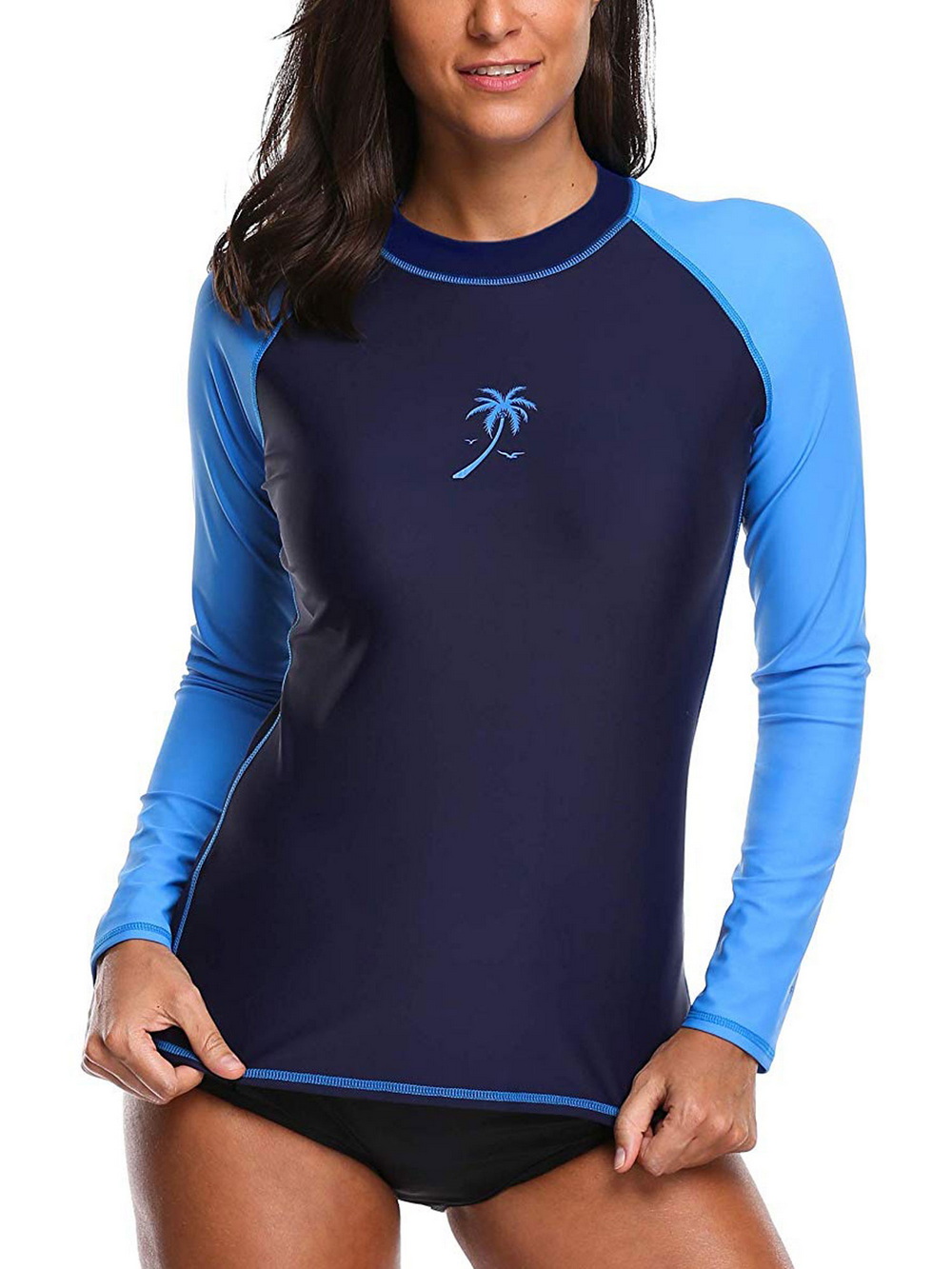Content Menu
● Introduction
● What Does Rash Guard Mean in Swimwear?
>> Key Features of Rash Guards
● Why is it Called a Rash Guard?
● Benefits of Wearing a Rash Guard
>> 1. Protection from Sunburn
>> 2. Comfort and Flexibility
>> 3. Versatility
>> 4. Style Options
● The Origin and Evolution of Rash Guards
● Why Are Rash Guards Important in Swimwear?
>> 1. Rash Prevention
>> 2. Sun Protection
>> 3. Comfort and Performance
>> 4. Additional Protection
● Rash Guard vs. Swim Shirt vs. Sun Shirt: What's the Difference?
● How to Choose the Right Rash Guard
>> 1. Fit
>> 2. Sleeve Length
>> 3. Material
>> 4. UV Protection
>> 5. Style
● Popular Uses of Rash Guards
● Caring for Your Rash Guard
● Common Misconceptions About Rash Guards
>> 1. Rash Guards are Only for Surfers
>> 2. Rash Guards Replace Sunscreen
>> 3. Rash Guards are Uncomfortable
● Frequently Asked Questions (FAQs)
● Conclusion
● Citations:
Introduction
If you are involved in water sports or beach activities, you might have come across the term "rash guard". But what does rash guard mean in swimwear? This article will explore the meaning, purpose, benefits, and variations of rash guards in swimwear, helping you understand why they have become an essential part of water-related apparel. Whether you are a swimmer, surfer, or simply enjoy spending time by the water, knowing about rash guards will enhance your experience and protection.

What Does Rash Guard Mean in Swimwear?
A rash guard is a type of athletic shirt made from stretchy, quick-drying materials such as spandex, nylon, or polyester. The term "rash guard" reflects its primary function: to protect the wearer from skin rashes caused by abrasion and prolonged exposure to the sun. Originally designed for surfers, rash guards guard against irritation from surfboard wax, sand, and rough water surfaces, as well as harmful ultraviolet (UV) rays from the sun[2][8].
Key Features of Rash Guards
- Material: Typically made from a blend of spandex and nylon or polyester, making them lightweight, flexible, and quick-drying.
- Fit: Rash guards are form-fitting to reduce drag in the water and prevent chafing.
- Protection: They provide a barrier against abrasions, sunburn, jellyfish stings, and other irritants.
- Design: Often feature flatlock stitching and multi-panel construction to increase durability and mobility[2][9].
Why is it Called a Rash Guard?
The name rash guard originates from its primary function: to guard against rashes. When participating in water sports, individuals are often exposed to various irritants, such as surfboard wax, sand, and prolonged sun exposure. The rash guard acts as a protective layer, reducing the likelihood of developing skin irritations and rashes.
Benefits of Wearing a Rash Guard
1. Protection from Sunburn
One of the most significant advantages of wearing a rash guard is its ability to protect the skin from sunburn. With a high Ultraviolet Protection Factor (UPF), rash guards can block a substantial amount of harmful UV rays, making them an excellent choice for beachgoers and surfers.
2. Comfort and Flexibility
Rash guards are designed to be comfortable and flexible, allowing for a full range of motion. This is particularly important for athletes who need to perform various movements while swimming or surfing.
3. Versatility
Rash guards can be worn alone or layered over swimsuits, making them a versatile addition to any swimwear collection. They are suitable for various water activities, including surfing, paddleboarding, and swimming.
4. Style Options
Available in a wide range of colors, patterns, and styles, rash guards can be both functional and fashionable. Whether you prefer a classic black rash guard or a vibrant, patterned design, there are options to suit every taste.

The Origin and Evolution of Rash Guards
Rash guards originated in Australia in the late 1970s when surfers needed protection from the sun and the abrasive effects of surfboards. Over time, the design evolved with advances in fabric technology, adding UV protection and antibacterial properties. Today, rash guards are used not only by surfers but also by swimmers, snorkelers, divers, and other water sports enthusiasts worldwide[2][5].
Why Are Rash Guards Important in Swimwear?
1. Rash Prevention
The primary reason for wearing a rash guard is to prevent rashes caused by friction and abrasion. When surfing, paddling, or swimming, the skin can rub against the surfboard's wax, sand, or rough water surfaces, leading to painful irritation known as "surf rash." Rash guards create a smooth barrier that protects the skin from these irritants[3][8].
2. Sun Protection
Rash guards are often made with fabrics that have a high Ultraviolet Protection Factor (UPF), blocking up to 98% of harmful UV rays. This helps prevent sunburn and reduces the risk of long-term skin damage while enjoying outdoor water activities[1][8].
3. Comfort and Performance
Rash guards are designed to be lightweight and breathable, allowing for a comfortable fit that dries quickly. Their stretchy fabric supports a full range of motion, making them ideal for active water sports like surfing, kayaking, and paddleboarding[2][3].
4. Additional Protection
Besides sun and rash protection, rash guards can also provide a degree of defense against jellyfish stings and other marine irritants. They are sometimes worn under wetsuits to prevent chafing and add an extra layer of warmth in cooler water[2][3].
Rash Guard vs. Swim Shirt vs. Sun Shirt: What's the Difference?
Though often used interchangeably, rash guards, swim shirts, and sun shirts have distinct characteristics:
| Feature | Rash Guard | Swim Shirt | Sun Shirt |
| Fit | Tight, form-fitting | Looser fit | Loose and casual |
| Material | Spandex/nylon/polyester blend | Lightweight polyester or similar | Cotton blends or polyester |
| Purpose | Protection from rashes, UV, abrasion | UV protection, modesty | UV protection, casual wear |
| Water Use | Designed for water immersion | Can be worn in water but less ideal | Mainly for land use, not water |
| Drying Speed | Quick-drying | Moderate drying | Varies |
Rash guards are preferred for high-intensity water sports due to their snug fit and technical fabrics, while swim shirts and sun shirts are more casual and comfortable for beachwear or light water activities[1][4][7][8].
How to Choose the Right Rash Guard
When selecting a rash guard, consider the following factors:
1. Fit
Choose a rash guard that fits snugly but is not overly tight. It should allow for movement without feeling restrictive.
2. Sleeve Length
Decide between long-sleeve and short-sleeve options based on your comfort level and the weather conditions. Long sleeves provide more sun protection, while short sleeves offer better breathability.
3. Material
Look for rash guards made from high-quality materials that offer both comfort and durability. A blend of spandex and nylon or polyester is ideal.
4. UV Protection
Check the UPF rating of the rash guard to ensure it provides adequate sun protection. A UPF of 30 or higher is recommended for effective sun defense.
5. Style
Choose a style that reflects your personality and complements your swimwear. With various designs available, you can find a rash guard that suits your aesthetic.
Popular Uses of Rash Guards
Rash guards are versatile and used in many water-related activities, including:
- Surfing
- Swimming
- Snorkeling and scuba diving
- Paddleboarding and kayaking
- Windsurfing and kitesurfing
- Beach volleyball and other beach sports
Their protective qualities and comfort make them a popular choice for anyone spending time in or near water[2][3][7].

Caring for Your Rash Guard
To maintain the quality and longevity of your rash guard:
- Rinse it with fresh water after each use to remove salt, sand, and chlorine.
- Avoid using bleach or fabric softeners.
- Air dry away from direct sunlight to prevent fading and fabric damage.
- Store flat or folded to avoid stretching the fabric[5].
Common Misconceptions About Rash Guards
1. Rash Guards are Only for Surfers
While rash guards are popular among surfers, they are suitable for anyone engaging in water activities. Swimmers, paddleboarders, and beachgoers can all benefit from wearing a rash guard.
2. Rash Guards Replace Sunscreen
Although rash guards provide UV protection, they should not replace sunscreen. It is essential to apply sunscreen to all exposed skin, even when wearing a rash guard.
3. Rash Guards are Uncomfortable
Many people believe that rash guards are uncomfortable due to their tight fit. However, when made from high-quality materials, they can be quite comfortable and allow for a full range of motion.
Frequently Asked Questions (FAQs)
Q1: What does rash guard mean in swimwear?
A rash guard is a tight-fitting athletic shirt made from materials like spandex and nylon designed to protect against rashes caused by abrasion and sun exposure during water activities[2][8].
Q2: Can rash guards protect against sunburn?
Yes, rash guards often have UPF-rated fabric that blocks harmful UV rays, providing significant sun protection[1][8].
Q3: Are rash guards suitable for all water sports?
Yes, rash guards are versatile and used in surfing, swimming, snorkeling, paddleboarding, and many other water sports[2][3].
Q4: How is a rash guard different from a swim shirt?
Rash guards are form-fitting and designed for water immersion and protection, while swim shirts are looser and mainly for casual wear and sun protection[4][7].
Q5: How do I care for my rash guard?
Rinse after use, avoid bleach and fabric softeners, air dry in shade, and store properly to maintain its quality[5].
Conclusion
Understanding what does rash guard mean in swimwear reveals its essential role in protecting skin from rashes, sunburn, and marine irritants while enhancing comfort and performance in water activities. Whether you are a professional surfer or a casual beachgoer, investing in a quality rash guard can significantly improve your experience and safety in the water.
Citations:
[1] https://us.speedo.com/faq/what-is-a-rash-guard.list
[2] https://en.wikipedia.org/wiki/Rash_guard
[3] https://www.swimoutlet.com/blogs/guides/understanding-a-rashguard
[4] https://www.titlenine.com/swim-shirts-vs-rash-guards/
[5] https://www.abelyfashion.com/what-is-rashguard-swimwear.html
[6] https://www.cs.cmu.edu/afs/cs.cmu.edu/project/cmt-40/Nice/Transfer/Chinese/xferlexicon.txt
[7] https://knix.com/blogs/resources/what-is-rash-guard-swimwear
[8] https://swimzip.com/blogs/beach-life/what-is-a-rash-guard
[9] https://www.roxy.com/blogs/expert-guides/how-to-choose-a-rashguard-womens-guide
[10] https://swimzip.com/blogs/beach-life/what-is-a-rash-guard?srsltid=AfmBOooDM2kM8w2jj2FpRxFsL7ySfT7ptgHJ6Cx7qZAjrQmkXXttmYdJ




































